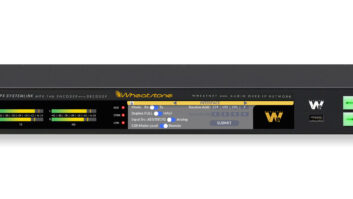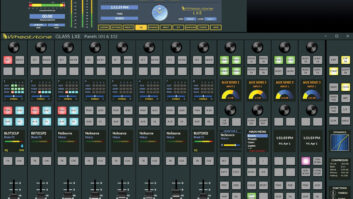SEATTLE −− As studio engineer for Sandusky Broadcasting in Seattle, I’m responsible for the studio facilities for a five-station cluster consisting of stations KLSY(FM), KIXI(AM), KLCK(AM), KKNW(AM) and KRWM(FM).
For several years, going as far back as 2007, we had been looking to upgrade and modernize our studios using networked digital audio technology. The system we had in place had some age on it and some of the parts were becoming difficult to obtain, making maintenance difficult. We knew we would need to remedy that situation if we were to keep our systems reliable and remain competitive.

Technology
We originally had looked at TDM networking technology. However, as we continued to evaluate options and the newer audio-over-IP-based technology began to enter the marketplace, I saw that it had distinct advantages in our application.
For us, reliability is key. The ability to build a network from small, intelligent building blocks using off-the-shelf wiring and switching components — in other words, an open IP infrastructure — meant that we could design a system with essentially no single points of failure.
After evaluating the various networking technologies and finding that Wheatstone’s WheatNet-IP fit our needs most closely, we contracted with Jim Hibbard and Kat Coffey of Pacific Mobile Recorders of Sacramento, Calif., to provide us with a turnkey installation.
This was to be no simple task; new furniture from Studio Technologies was being installed to accommodate the new consoles and equipment, and all five of our stations needed to remain on the air during the project.
Equipment was ordered in late 2010, and by January 2011 the consoles and routing equipment were on-site and ready for installation. We decided to equip our five on-air studios with larger, full-featured Wheatstone Evolution-6 20-fader consoles; these would give our air talent the versatility to deal with any type of broadcast. Each of these was equipped with a mix engine Blade and two IP-88ad Blades, for a total complement of 16 analog and 16 AES inputs and outputs local to each console.
For our auxiliary studios, we chose 12-fader Evolution-1 consoles; these compact units contain their own metering and control displays and give us a comprehensive set of features in a small footprint.
In our production rooms, we made an even bolder move: There are no consoles at all.
Instead, we’re using Wheatstone’s Glass-E virtual consoles, which emulate a full E-series control surface in software. These use the same IP-88e mix engine Blade as the other consoles, and we provided an IP-88a analog Blade also to provide 8 x 8 analog I/O local to the room.
Each of our studios — on-air, auxiliary and production — is equipped with its own Cisco 2960G switch. This topology allows each room to function independently in the event of a network disruption.
Interfacing
We also chose to use WheatNet-IP driver software on our Broadcast Electronics AudioVault machines to eliminate the need for sound cards, and we were able to directly interface AudioVault control to the WheatNet-IP system via Ethernet as well.
During the installation, the flexibility and power of the audio-over-IP routing system became very useful. After outfitting our technical operations center with the WheatNet-IP Blades necessary to handle our air chains, Jim Hibbard designed routing salvos to allow fast, easy switching between main and auxiliary studios for each station.
We built the auxiliary studio for each station first. When complete, we used the salvos to switch on-air operations to that auxiliary studio while the on-air studio was rebuilt. We then used another salvo to move operations back to the main studio.
Because we were remodeling existing rooms rather than moving to new facilities, it took some time to plan and carefully implement this phased rebuild. One of our stations, KKNW(AM), was actually moved from one studio to another in the middle of two back-to-back remote broadcasts. We began work in February of 2011, and the system was substantially complete by mid-May.
Transitions like this are never easy on the on-air staff, but this one was smoother than most. Since the move, our people seem happy. Our production people are particularly pleased with the way the Glass-E virtual mixer interfaces allow them more room to work, because they don’t need to have a bulky console taking up space in their areas. As for me, my peace of mind comes from the fact that our facility is now based on off-the-shelf IT infrastructure and is as future-proof as it can possibly be.
The author is an engineer with Sandusky Broadcasting.
For information, contact Jay Tyler at Wheatstone in North Carolina at (252) 638-7000 or visit www.wheatstone.com.












